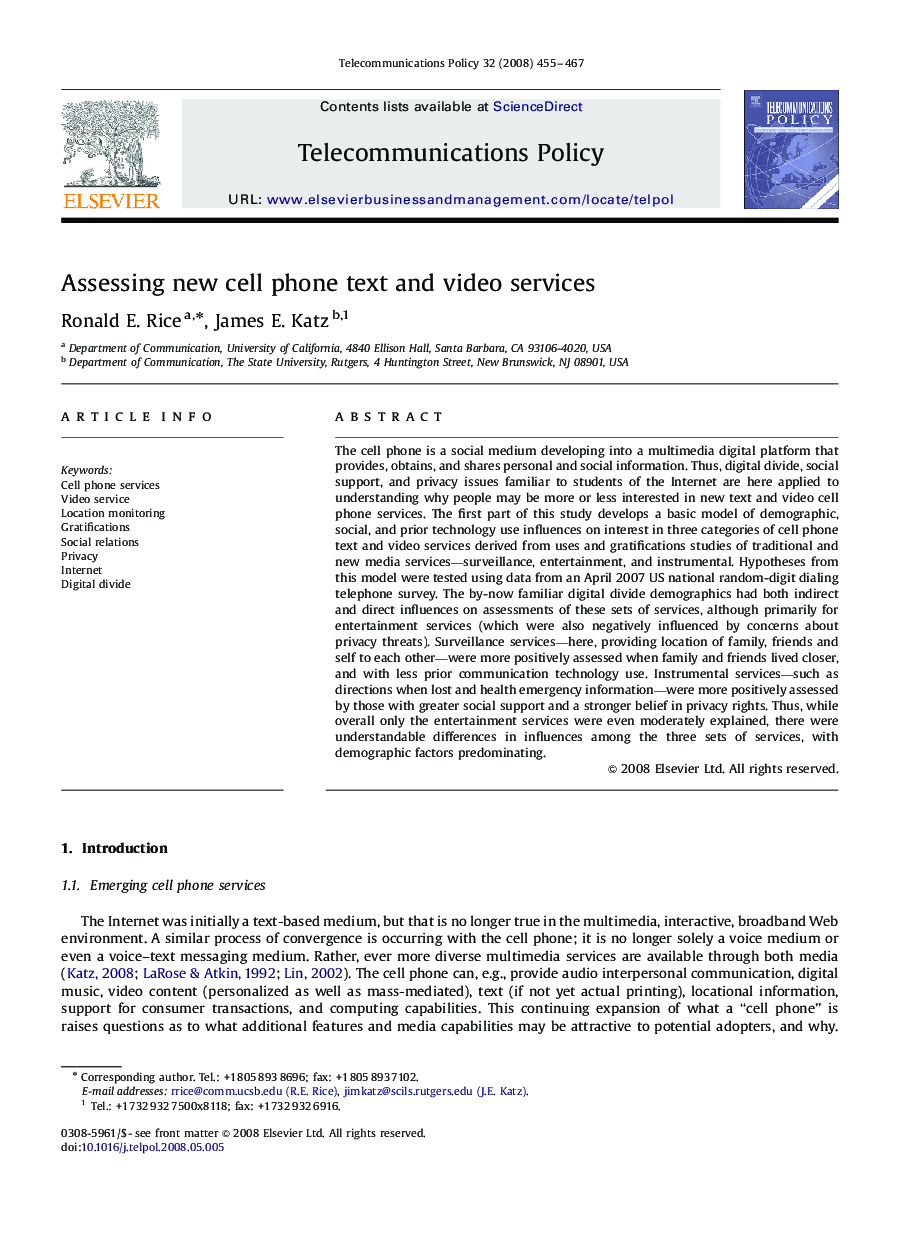| کد مقاله | کد نشریه | سال انتشار | مقاله انگلیسی | نسخه تمام متن |
|---|---|---|---|---|
| 560399 | 875157 | 2008 | 13 صفحه PDF | دانلود رایگان |

The cell phone is a social medium developing into a multimedia digital platform that provides, obtains, and shares personal and social information. Thus, digital divide, social support, and privacy issues familiar to students of the Internet are here applied to understanding why people may be more or less interested in new text and video cell phone services. The first part of this study develops a basic model of demographic, social, and prior technology use influences on interest in three categories of cell phone text and video services derived from uses and gratifications studies of traditional and new media services—surveillance, entertainment, and instrumental. Hypotheses from this model were tested using data from an April 2007 US national random-digit dialing telephone survey. The by-now familiar digital divide demographics had both indirect and direct influences on assessments of these sets of services, although primarily for entertainment services (which were also negatively influenced by concerns about privacy threats). Surveillance services—here, providing location of family, friends and self to each other—were more positively assessed when family and friends lived closer, and with less prior communication technology use. Instrumental services—such as directions when lost and health emergency information—were more positively assessed by those with greater social support and a stronger belief in privacy rights. Thus, while overall only the entertainment services were even moderately explained, there were understandable differences in influences among the three sets of services, with demographic factors predominating.
Journal: Telecommunications Policy - Volume 32, Issue 7, August 2008, Pages 455–467